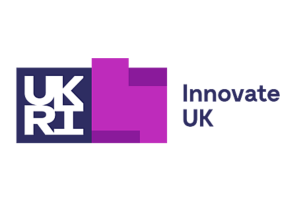Mindset XR Module 9: What are the timelines and costs for medical device regulation?

Welcome to the Mindset Extended Reality (XR) for digital mental health programme learning resources, which include three series: medical regulation, clinical evidence and lived experience involvement. Mindset-XR is helping to catalyse the growth of immersive digital mental health solutions in the UK, through funding, tailored support and training. It is delivered by Innovate UK and the Health Innovation Network South London (HIN).
This series focuses on medical regulation, with key insights from Hardian Health. Across 10 modules, we provide an accessible introduction to people and companies that want to learn more about medical device regulation, with a focus on XR devices. Each module offers a high level overview of a different topic, including medical device regulation in the UK and EU, core medical device standards and overseas regulation. Each module includes additional resources to support your learning and a quiz to test your understanding.
Outline
How do I start regulatory processes?
An overview of when to start regulatory processes.
What are the key timelines and costs for regulatory processes?
A closer look at the set up and cost of Quality Management Systems (QMS), technical file, registration and notification fees, and staff and training.
Multiple choice questions to test your understanding of the costs and timelines associated with medical device regulatory processes.
Welcome to Module 9: Timelines and costs for regulatory processes. In this section, we're looking at the costs and timelines associated with medical device regulation. Topics include:
How do I start regulatory processes?
When should you start your regulatory strategy?
It is best to consider your regulatory strategy soon as you have a concept or idea for a medical purpose.
It is far easier, cheaper and quicker to consider regulatory compliance early than to ignore it until the last minute. ‘Regulatory debt’ is expensive! Non-compliance can be fatal to a business.
Your first device certification takes the longest and is the most expensive, as you need to start from scratch. After this, each subsequent device certificate should become faster and cheaper. This is possible if you have built your regulatory strategy appropriately.
Regulatory readiness levels
Ideally, you should start applying quality assurance as soon as you want to translate research into development. This is when the possibly divergent ideas for a technological solution to a problem start to converge into a product idea.
We apply a Technology Readiness Level (TRL) scale to self-assess this. It’s a scale from 1 to 9, where 1 is the most basic idea and 9 is a product that’s fully developed, put to market and in service; TRL 4 is about the level on this scale when the Design Control, Clinical Evaluation and Risk Management procedures really need to kick-in.
What are the key timelines and costs for regulatory processes?
Summary
It is best to consider your regulatory strategy soon as you have a concept or idea for a medical purpose.
Quality assurance is an ongoing process covering the lifetime of your device. Everyone in your company is responsible for ensuring quality - not just the quality manager!
There are lot of timelines and costs associated with regulatory processes, such as technical file, accreditation, registration and notification fees, and staff and training. Although these can run in parallel, there can often be delays in initial timelines.
In this module, Timelines and costs for regulatory processes, we looked at the costs and timelines associated with regulatory processes. After using this resource, you should have a understanding of the following:
Quiz

